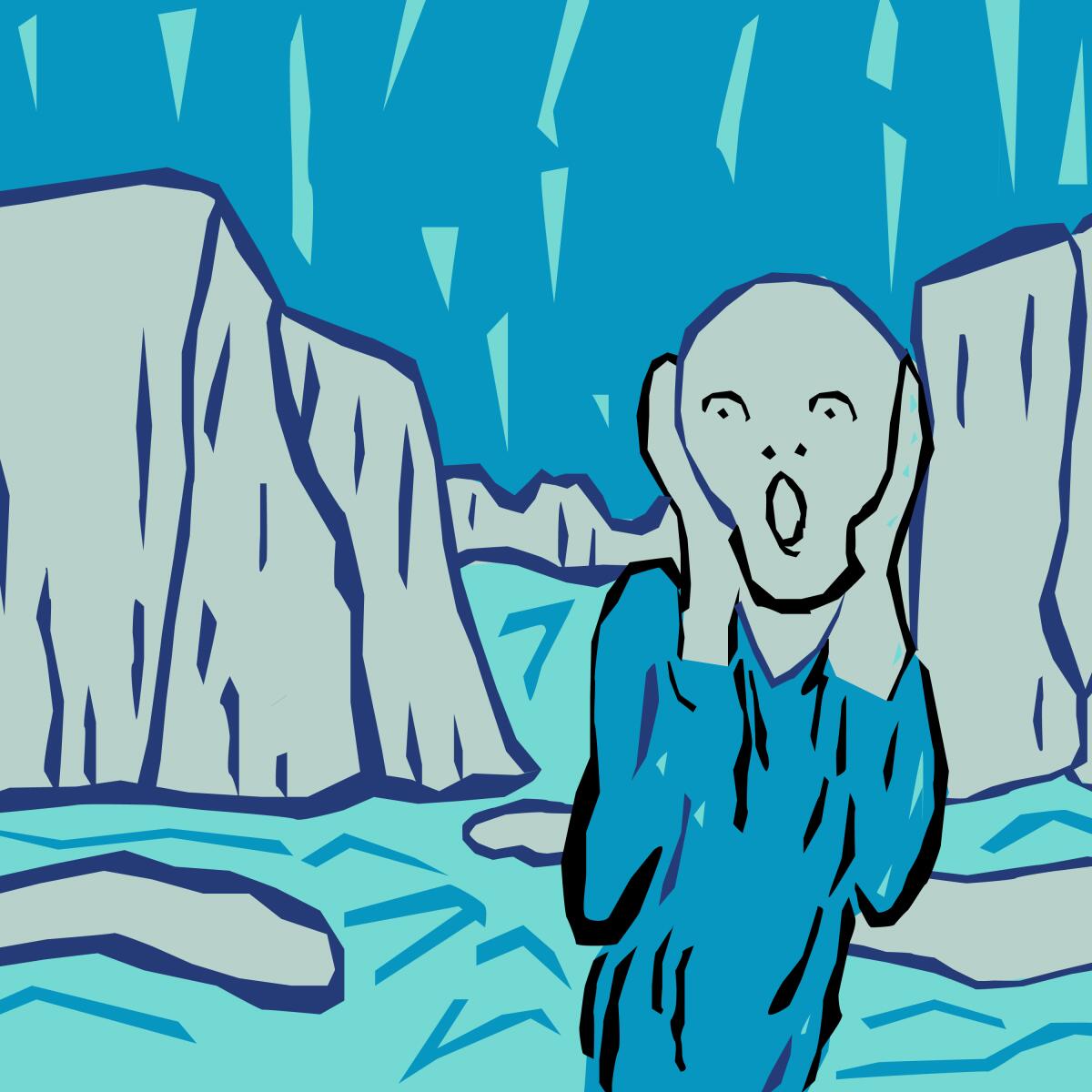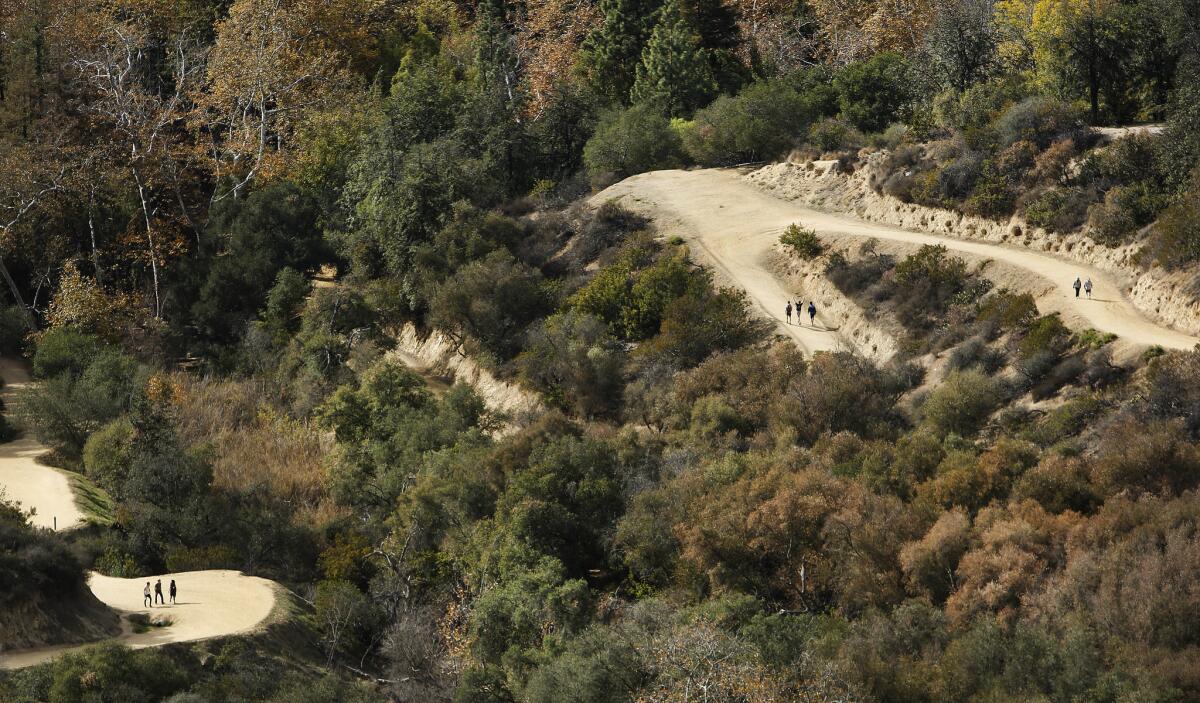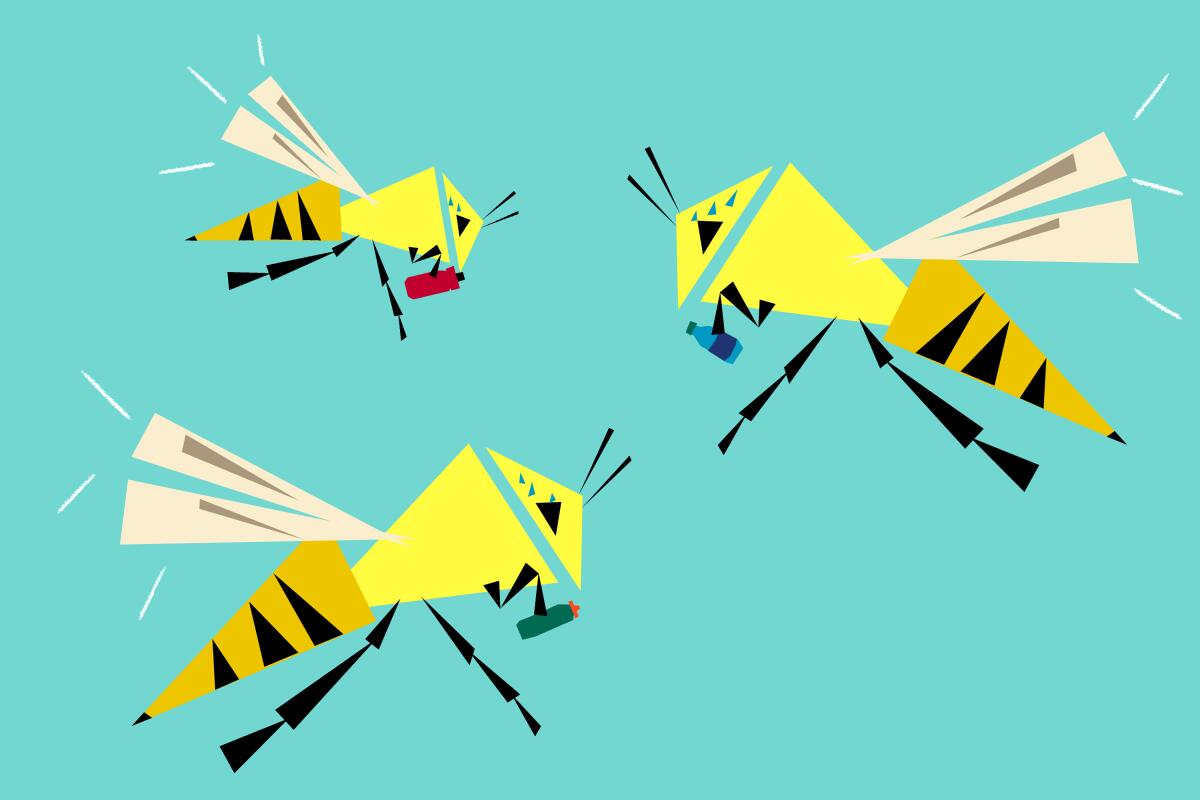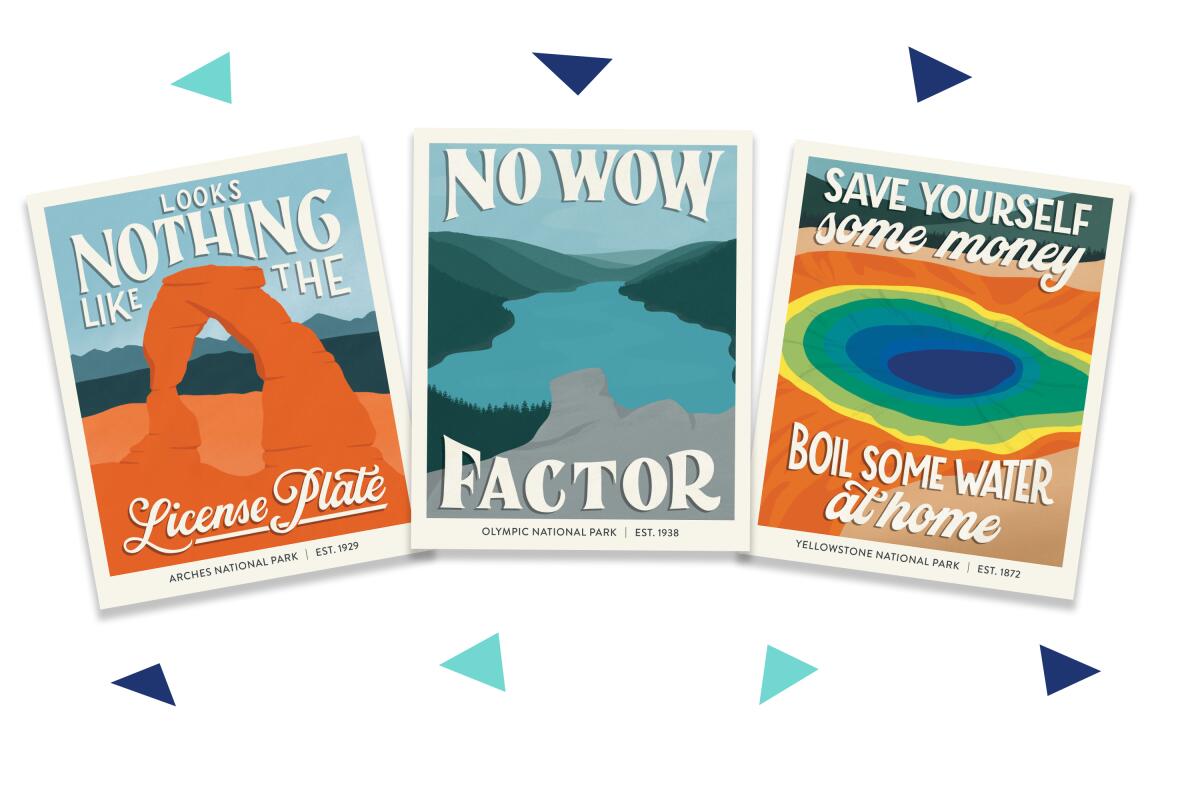Iceland wants to hear you scream. Here’s why

- Share via
By Mary Forgione
Design and illustrations by Micah Fluellen
Sign up here to get The Wild sent weekly to your inbox.
Thank you, Iceland, for the release we all need right now: a good scream. The self-described land of fire and ice will broadcast your best scream — loud enough to blast the bottled-up tension we’re all feeling right now — into the country’s remote outdoors. For free.
Sound silly? It may not be. Screams can be cathartic, an acceptable way for your body to release anger and tension.
Iceland gets it. That’s why it launched the campaign to get everyone howling. Start by recording your best screech at lookslikeyouneediceland.com and choose a location to let it out. (I picked the wonderfully remote Snaefellsjokull glacier in the western part of the country.) You can replay your scream, and play those of others (not-so-easy listening), as many times as you like.
Too overwrought to let loose? Follow the website’s tips on how to get the most out of your scream: “Stand with your feet hip-width apart, a slight bend in your knees. Relax your shoulders. You may find it useful to put your hands on your hips or use your arms to help push out some of the pent-up emotion. Follow your instincts.”
By the way, Iceland may want your screams but it doesn’t want you. The country is admitting travelers from some European nations, but Americans haven’t yet made the come-visit list.
3 things to do this week

Many people think Southern California’s wildflower season ends in spring. Not so. I saw fantastic displays of lemon lilies, scarlet penstemon and bright yellow buckwheat on recent hikes in the San Gabriel Mountains. California has more than 6,500 types and varieties of plants that are found nowhere else. Below are three good ways to learn more about the flora that surrounds us.
1. Visit California’s largest native plant garden. A walk in the California Botanic Garden (previously Rancho Santa Ana Botanic Garden) in Claremont can help you identify flowers and shrubs you’ll see on local trails, or ones you may want to plant in your backyard. You’ll also learn which ones love summer heat, and which habitats they thrive in. Some plants I commonly see in the wild — coyote mint, sage, cactus — have been turned into ice cream flavors. L.A. Times staff writer Jeanette Marantos explains how you can pick up a pint and support the garden during its virtual fundraiser on July 30. Read the full story here. The garden is open, with limited capacity and advance tickets required because of the coronavirus pandemic.

2. Take a deep dive into L.A.’s prehistoric plants. Time to jump into the way-back machine for a look at what leafy greens L.A.’s sloths and camels were chowing down on 10,000 to 50,000 years ago. Spoiler alert: Many of these species — Mexican elderberry, ceanothus, Western sycamore and California coffee berry — can still be found today in places as close as Griffith Park. Learn about these plants and the animals that ate them from experts at the La Brea Tar Pits by joining a free livestreaming event, which includes music from DJ Rani de Leon. It starts at 6 p.m. Friday and is part of the Natural History Museum’s Summer Nights at Home series. Check out the details here.
3. Adopt a baby oak tree on your next hike. Trippet Ranch in Topanga State Park is known for its lush canopies of coast live oaks that offer welcome shade in summer to overheated hikers. Recent years of drought have devastated many trees, which led to new plantings of about 250 acorns and seedlings. Usually, volunteer groups water the baby oaks (each needs about 5 gallons a month). But that won’t happen this year because of the pandemic. Want to help? Adopt an oak tree and give it some life-saving water and TLC this summer, track your progress on a report card and take pictures to let the park know how your tree is doing. If you don’t have time to foster a baby oak, make a donation to keep the trees going. Get started at the Adopt an Oak website.
The must-read
In a typical year, a Mt. Whitney day hike can be a punishing 22-mile slog up and back. During the coronavirus pandemic, the trek was even more unnerving for one hiker. That’s because the main trail to the highest peak in the Lower 48 states didn’t open in May, as it usually does.
Fearing that early-season rescues on the mountain (it’s typically snowy and more dangerous until late June) would put emergency personnel at risk, officials kept the trail closed. Hikers and backpackers who had received hard-to-get permits waited week by week to see whether they would have a shot at the roughly 14,494-foot summit. May passed, then June. The trail remained shut.
L.A. Times staffer Rachel Schnalzer thought she was one of those unlucky hikers — until everything changed. With the coronavirus threat and then an earthquake in the Mt. Whitney area to boot, she had scrapped her plans to hike the peak over Fourth of July weekend. Then the trail opened two days before her permit date. She had trained physically, but was she mentally ready to go? Read her story here.
Wild things

This isn’t a story about bees behaving badly, but you might think it is. Earlier this month, the popular Jumbo Rocks Campground at Joshua Tree National Park closed for a few weeks because of “aggressive honeybee activity,” park officials said. A few days later, a second campground closed for the same reason. Were the bees swarming? No. Were they stinging people? No. They just started gathering and hanging out in cars and at campsites, which made visitors nervous. It turns out the bees were thirsty (who wouldn’t be in triple-digit heat?) and needed time to find water in places that don’t involve humans. The campgrounds are reopening, and hopefully the bees have moved on.
Cool gear alert

If you’re a fan of cook-at-home meal boxes, read on. Patagonia created something similar for campers who want no-fuss healthy eats without having to shop. The 2-Day Camp Meal Kit for Two ($89) selects meals and snacks to keep you and your plus-one happily sated. Each dish, made from organic and responsibly sourced ingredients, takes about 10 minutes to prepare. The kit includes banana or apple porridge, wild sockeye smoked salmon, cans of mussels (smoked or savory), red bean chili, snacks and other items. You bring a stove, some pots, utensils and plates, and a few basics from the pantry. The kit also comes with a shopping list of extra food you should bring, and a cooking guidebook.
A social moment

Who doesn’t love national parks? Grumpy people on Yelp who give them one-star reviews. “Too orange, too spiky,” said one about Bryce National Park in Utah. My favorite: “Nothing like the license plate,” about Arches National Park, also in Utah. Illustrator and outdoors lover Amber Share of Raleigh, N.C., had the brilliant idea to make the beauty-blind reviews into splendid posters that defy the words. “For each park, I hand-letter a line from the one-star reviews alongside my illustration of each park as my way of putting [a] fun and beautiful twist on the negativity,” she wrote in an essay on Bored Panda. Share calls the series Sub-Par Parks, and posts her artwork on Instagram and on her website (where you can buy posters, stickers and postcards). She started in December, working from a spreadsheet of bona fide park disses she had collected (no, you can’t post a clever fake one now in hopes it will get picked). So far she has created 54 and plans to illustrate all 62 parks.
Send us your thoughts
What do you think? Keep the comments coming. Share anything that’s on your mind. The Wild is written for you and delivered to your inbox for free. Drop us a line at TheWild@latimes.com.
Click here to view the web version of this newsletter and share with others. I’m Mary Forgione and I write The Wild. I’ve been exploring trails and open spaces in Southern California for four decades.

Sign up for The Wild
We’ll help you find the best places to hike, bike and run, as well as the perfect silent spots for meditation and yoga.
You may occasionally receive promotional content from the Los Angeles Times.




